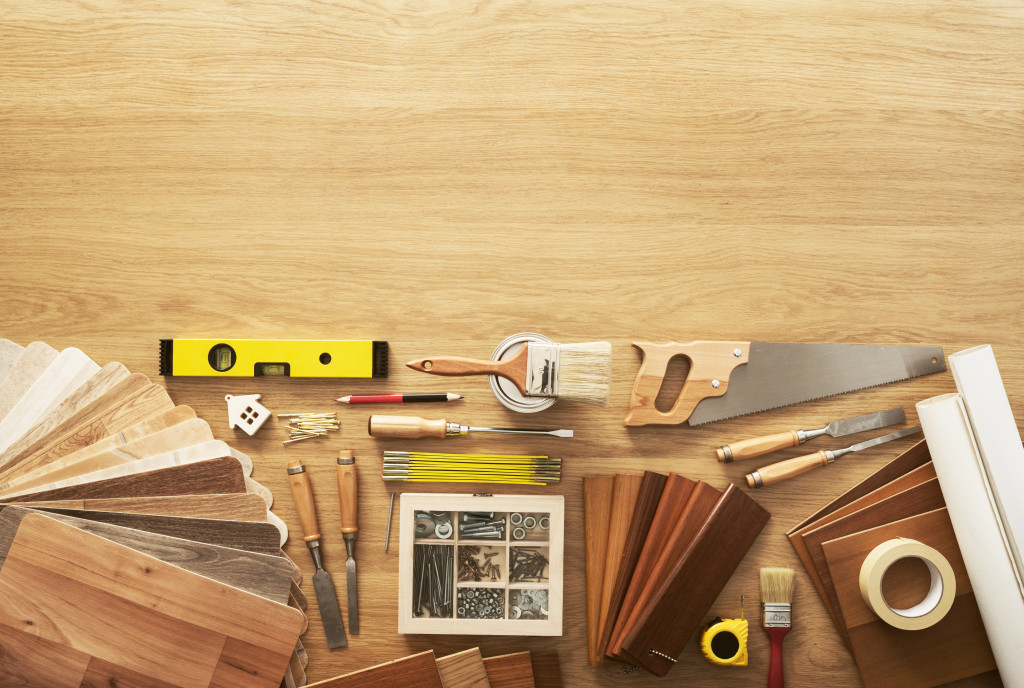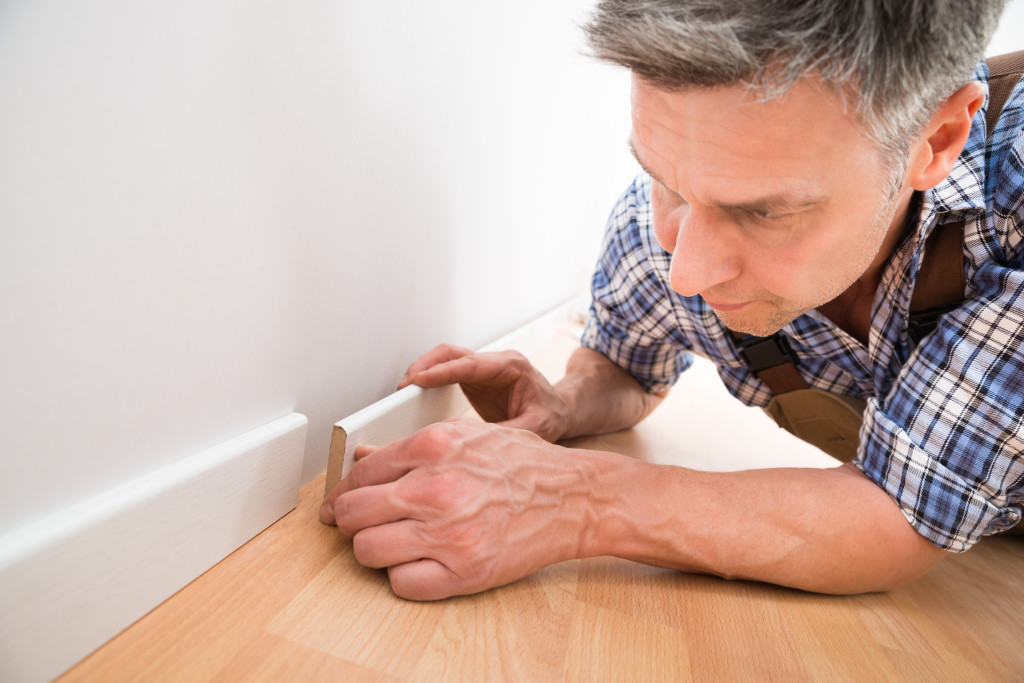How to Safely Remove Floor Moldings Without Breakage
If you want to spend a weekend remodeling part of your home, many times you’ll need to remove wood trim first. Whether you’re taking down a wall or sanding wood floors, you’ll need to remove any trim before you begin. This process isn’t as easy as it sounds; casing, molding, or baseboards can easily splinter and break if you’re not careful. Trim tends to be thin and made of softwood, which isn’t made to be taken out and reinstalled. However, you can accomplish this work without making a mess or wasting money if you know what steps to take.
Tools You’ll Need
To begin, you’ll need the correct tools, such as the following:
- Wood putty
- Pry bar
- Lineman’s pliers
- Needle-nose pliers
- Light hammer
- Wood wedge
Make sure you have these tools before you begin so that you don’t need to stop your work halfway to find the tools you need. Many hardware stores will have these supplies, and you can ask an employee if you need help finding a specific tool.
Score a Piece of Baseboard
To begin, cut a piece of baseboard the entire length of where it meets the wall. You can use a utility knife to cut any paint or caulk that has adhered to it. When you score this length where the two baseboards meet, you can prevent paper and paint from tearing from the drywall so that you won’t have a damaged surface. Use a metal putty knife 6 inches long to lightly work the area behind the baseboard so that you can start to loosen the material adhering the baseboard to the wall.
At the same time, you should pull in a forward motion to loosen the finishing nails and pins that are keeping the trim affixed to the wall. Pick one end of the baseboard to start on and delicately pry, going along the length of the trim until the piece is loose enough to come off the wall.
You’ll need to have patience when doing this step to avoid breaking the moldings, as releasing the baseboard will take some time to do. If you’re having difficulty placing the blade of the putty knife under the trim, try tapping the hammer’s handle gently so that the blade will sink in more.
Pull the Molding Free
At this point, you can try to pull the end of the trim loose away from the wall once the entire length is disconnected. Again, be careful so that you don’t accidentally damage another part of the wall, such as the adjoining wall or the door trim. In a kneeling position, slightly raise up and delicately and gently move the trim in a rocking motion to relax the trim on the part of the molding that’s tight between the corner baseboard next to it and the wall until the molding fully releases.
Label the Trim
Next, place a label or number on the lower part of the wall and the rear of the trim so that you can easily keep all the pieces in the correct order, mainly if you’ll be putting your boards back in their original places. Continue removing each piece the same way by going down the drywall and removing the adjoining pieces until all the parts you need have been removed. Take out the finishing nails from the trim you removed by using side cutter pliers.
Alternative Option: Pull Straight Outward
Another option when removing molding is to pull it straight and outward when you’re taking off the trim without taking out the nails first. Since nails have heads, you normally pull them out when you pull lumber out. However, trim works differently, as it’s attached with brads or finish nails. These brads or nails have small heads and are thin, so they don’t pull out as easily as nails attached to lumber. When you use any material, with the exception of medium density fiberboard, you can obtain traction on the trim by using a pry bar that’s thin and pulling the pry bar straight back to release the molding.
This effort will cause the trim to pull through the brads or nails and leave the fasteners still connected to the wall. The only potential issue is that some installers use construction or wood glue to make the trim stick, so if you find this arrangement is the case, the drywall paper will rip away with this method. Test a small section first to confirm.
Caulk is also placed on the tops of baseboards, outer parts of door and window trim, or sometimes on the back edge of the crown molding. Caulking is used so that gaps are covered to give a smoother appearance.
Tips to Stay Safe
If you need to use a larger tool to take out any trim that’s stubborn, such as a durable chisel or small crowbar, place a wide putty knife or broad knife between the wall and the trim to help you pry off the trim while protecting the surface of the drywall. You should always wear safety glasses when you’re doing a home renovation project such as this one so that your eyes will stay protected from any trim if it happens to snap into pieces.
You can easily remove floor moldings without breaking them when you follow this guide. Make sure you have the proper tools needed for this project before you begin to make your work easier. Visit your local hardware store to get any supplies you need and have them organized in the room you’ll be working in before you start.
While removing floor moldings is a relatively simple process, the main factor to keep in mind is that you need to have patience and know that the work may be slow going. Make sure that the moldings don’t break so that you can reinstall them after you’re done with your home project. Labeling the boards will allow you to more easily know which ones go back in what order when you’re replacing them. You’ll finish your project more quickly by using this technique.
Resources:
https://www.builddirect.com/blog/secret-design-weapons-floor-and-crown-moldings
https://www.builddirect.com/blog/this-weeks-wood-floor-mold-reducer-moldings
http://homeguides.sfgate.com/remove-baseboards-damaging-drywall-29807.html
https://www.thespruce.com/remove-trim-or-molding-without-breaking-1822783






